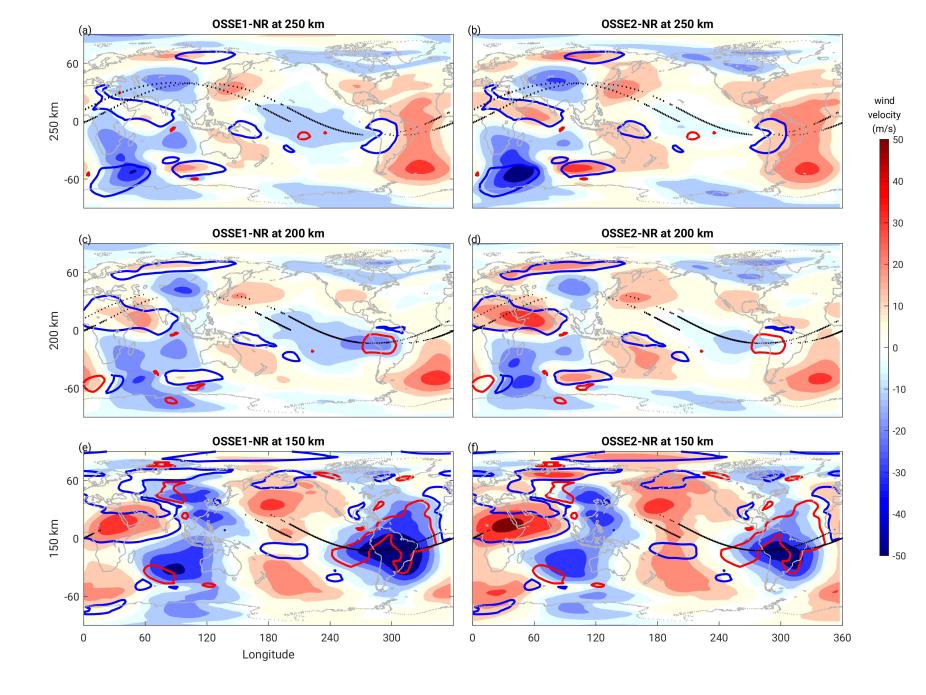Publication: JGR: Space Physics; HAO Author: Chih-Ting Hsu; Authors as listed in article: Chih-Ting Hsu, Nicholas Pedatella
The thermospheric data assimilation is limited due to the lack of continuous observation of the neutral state. Recently, the thermospheric wind data from the Michelson Interferometer for Global High-resolution Thermospheric Imaging (MIGHTI) on NASA's Ionospheric CONnection (ICON) became available. ICON/MIGHTI provides near-continuous observations of the mid- and low-latitude thermospheric meridional and zonal winds. This study assesses the impact of assimilating ICON/MIGHTI winds in the National Center for Atmospheric Research (NCAR) Whole Atmosphere Community Climate Model with thermosphere-ionosphere eXtension (WACCM-X) + Data Assimilation Research Testbed (DART) on the specification and short-term forecasting of the thermosphere. Observing system simulation experiments of WACCM-X+DART with and without assimilating synthetic ICON/MIGHTI meridional and zonal wind profiles are performed.

The difference between zonal wind field in the NR and the prior ensemble mean of OSSEs at 0000 UT of December 31. The first column shows the difference between zonal wind in the NR and the prior ensemble mean of OSSE1 at 150 km, 200 km, and 250 km altitude. The second column shows the difference between zonal wind in the NR and the prior ensemble mean of OSSE2. Positive/negative value means zonal wind from the NR is larger/smaller than that from the ensemble mean. The eastward wind is shown on the red scale, and the westward wind is shown on the blue scale. Black dots represent the observation location of assimilated ICON/MIGHTI wind data at about 150 km, 200km, and 250 km altitude used in the previous update from 16:30 UT to 19:30 UT of 30 December 2009. Red bold lines indicate the regions where the absolute difference between winds from OSSE1 and NR is larger than the absolute difference between winds from OSSE2 and NR by 8 m/s. Blue bold lines indicate the regions where the absolute difference between winds from OSSE1 and NR is smaller than the absolute difference between winds from OSSE2 and NR by 8 m/s.
The result shows that this new dataset can correct the wind specification throughout the mid-and low-latitude thermosphere, especially around the 90 to 160 km altitude region. A notable impact is also shown in the region above 300 km altitude, which is above the altitude of ICON/MIGHTI wind observations. The impact of ICON/MIGHTI data on the zonal wind field is larger than on the meridional wind field. The errors of meridional and zonal wind fields in the mid- and low-latitude region are reduced by 6\% and 12\%, respectively, with the help of ICON/MIGHTI wind data.